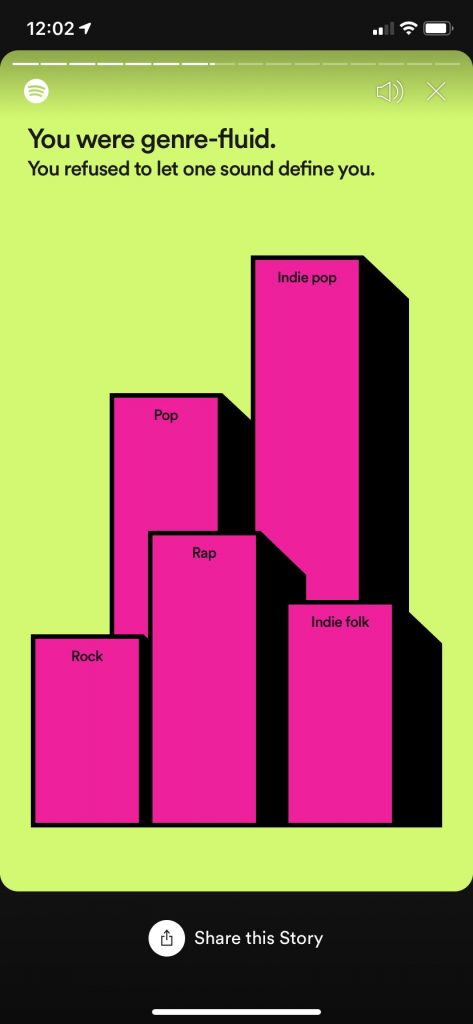We’ve all witnessed truly horrendous marketing—the kind that gives you a weird feeling when you see it and then, shortly after, blows up on Twitter.
Not great.
But what’s also a problem is mediocre marketing. Mediocre marketing is sneaky. It flies under the radar. It looks decent. It doesn’t offend anyone. It might impact the company…but it also might not. It’s neither loved nor hated.
It’s boooooooring. And it works fine…until it doesn’t.
The good news is, avoiding bad and mediocre marketing really just comes down to three main ingredients. No, these aren’t the P’s of marketing (plus, there’s four of those). Instead, they’re something we like to refer to as story, strategy, and scorecard.
1. Story and Brand
Every marketer, designer, communication strategist, and PR associate has a slightly different definition for what brand—or your story—really is. Despite the fact that people struggle to define it, great brands have a few things in common: they create loyal followers and stewards, create recognition in the market, and have a competitive edge over those without a strong brand and story.
Sounds great in theory, but crafting a brand that attracts followers is pretty darn difficult.
It’s Not Just About the Logo
One of the biggest mistakes people make when it comes to brand is immediately thinking about the visual elements of a brand—logos, names, fonts, colors—instead of working to uncover a clear understanding of what truly sets brands apart: their reason for being. Yes, I’m talking about Simon Sinek’s viral Ted Talk, but I’m also referring to the old sentiment, “you can’t put lipstick on a pig.”
Here’s a different example. In college, I had a screenwriting teacher tell us that you could screw up and make a bad movie from a great script, but you can never make a good movie from a bad script. If the idea sucks, the idea sucks—and no amount of money, pizzazz, or sleek visuals can salvage it.
The same theory applies to your brand. If you don’t know what makes you different or why you’re even in business (meaning you don’t have a strong foundation set), you’re never going to create a truly brilliant brand—at least not intentionally.
Brand and Its Impact on Marketing
To have a brand is often seen as a luxury—something that big B2C companies can invest in but that’s not as critical to success for smaller businesses or B2B companies. This couldn’t be farther from the truth.
Instead, investing in your brand can help every aspect of your marketing—what you offer to the market is more clear, ad performance often increases while costs go down, decisions get easier because you have clearly defined parameters, and more.
Many elements fall under the bucket of brand and story—things like messaging, elevator speeches, visual identities, and more. And while those are definitely important, getting a solid understanding of your brand’s foundation is the first step.
2. Strategy
Strategy, like brand, is infamous for being hard to define. My personal favorite definition, though, is the following.
The essence of strategy is choosing what not to do.
Michael Porter
You can have a strategy for pretty much everything in marketing—brand strategy, content marketing strategy, paid media strategy. But what we’re talking about here is your overarching marketing strategy. As the quote above states, that means choosing what to focus on, what to spend resources on, and what is merely a waste of your time.
Asking the Right Questions
The key to strategic marketing isn’t necessarily knowing the nitty-gritty details to every single tactic, channel, or ad platform, but rather asking yourself the right questions. Good questions typically lead to good answers, and they can expose major gaps in your strategy.
A few of our favorites include:
- What business objectives does the strategy need to support?
- How will we determine success or failure?
- How much should I spend?
- Can we learn anything from past efforts?
- What does the market look like?
- Who is our audience?
- What resources (people) are available to assist in implementing?
- When does this need to happen?
Marketing without Strategy
While I know this is obvious, it needs to be said—marketing without strategy is a recipe for disaster. Even if you’ve crafted a compelling story and a beautiful brand, none of it matters if you can’t reach your intended audience or you blew your entire budget on one initiative that was never going to work. Know where you’re going, who you’re trying to reach, how you’re going to get there, and what metrics matter.
Which brings us to our third bucket…
3. Scorecard
Scorecard, analytics, impact reporting. Whatever name you use, the sentiment is mostly the same:
- Collecting data
- Measuring progress against your goals, and
- Gaining insights into opportunities for optimization
But all of that is really just the basics. If you’re not currently collecting data and measuring marketing’s impact on the company and progress against goals, you’re behind.
Data and Machine Learning, Personalization, and More
Having the infrastructure to collect data, though, is really about preparing for the future of marketing: personalization, machine learning, and—dare I say it—AI. Without clean data, these marketing buzzwords are all just fantasies. As the old saying goes, “good data in, good data out.” Algorithms need accurate data to output accurate recommendations.
So, while you may not be feeling the effects of poor data infrastructure now, you probably will down the road when your competitors are doing really cool things with their data and you’re still trying to set the foundation.
Story, Strategy, and Scorecard: You Need All Three
Truly exceptional marketing happens when you find the sweet spot of story, strategy, and scorecard—when you can use the data you have in an innovative way to reach an audience with compelling creative, and then prove that campaign’s worth to the business.
One great recent example is Spotify’s Wrapped campaign. If you use Spotify, you know what I’m talking about.

Example from Spotify’s Wrapped campaign
At the end of 2019 and on the eve of the new decade, Spotify shared streaming data with their users of their own listening habits from the decade. Users could dig into how many minutes they listened to music on Spotify, who their favorite artists of the decade were, and which genres they listened to most. Then, Spotify made it incredibly easy to share with friends and networks across social media.
The campaign blew up on Instagram and was a massive success. Since music is often very meaningful and nostalgic to people, Wrapped connected with each individual listener. It told a compelling story in a beautiful way, used listener data to do something innovative, and was measured and tracked across social media and through their own app.
That’s the kind of marketing that endures. Is your own up for the challenge?




